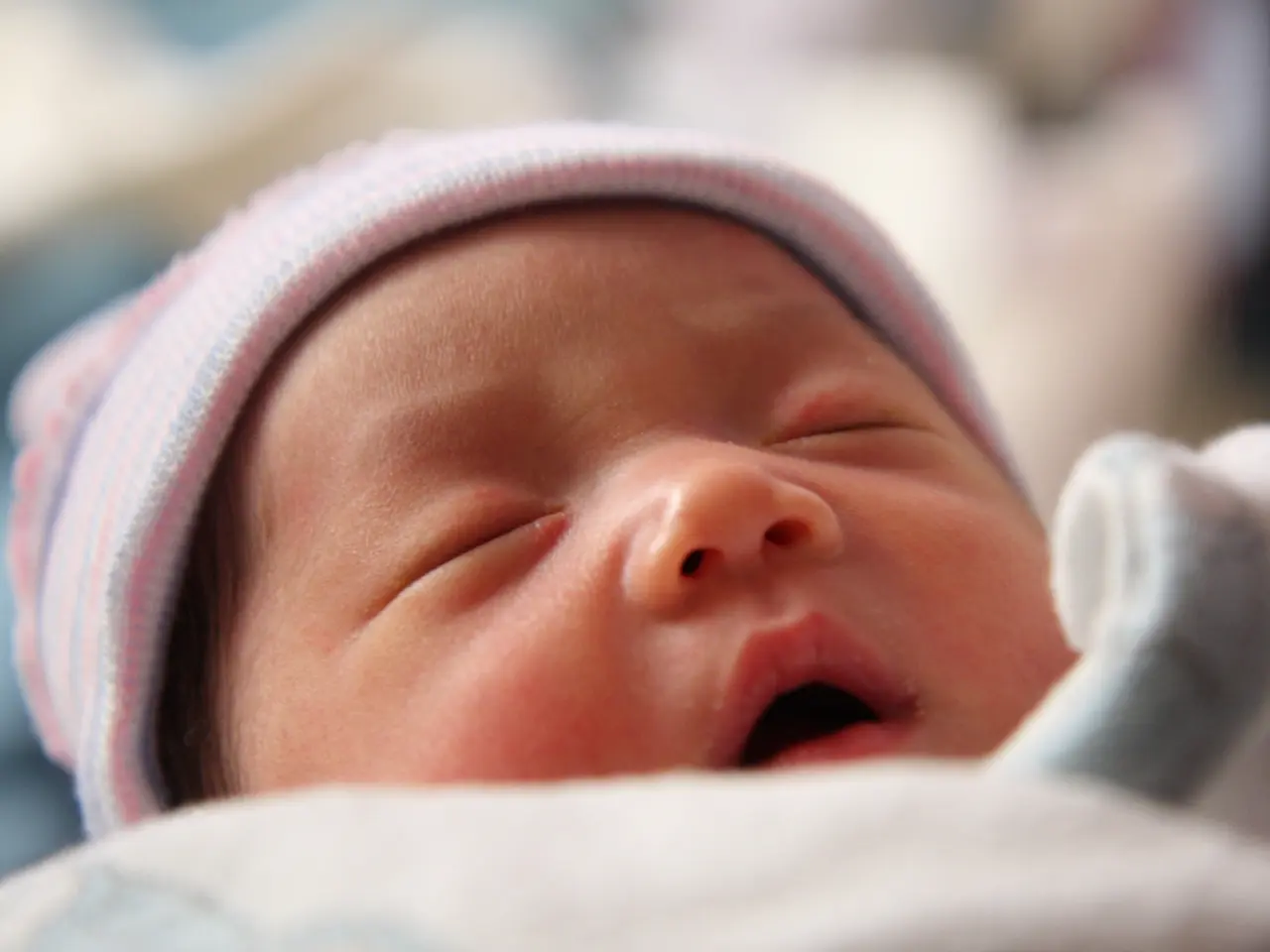Adult Respiratory Rate Evaluation and Normal Values Across All Ages: A Guide for Measurement
In the realm of vital signs, respiratory rate plays a significant role in assessing an individual's health. This rate, which refers to the number of breaths taken per minute, varies across different age groups.
Newborns typically breathe between 30 and 60 times per minute, a rate that gradually decreases as they grow. By the time they reach the age of 12, children's normal respiratory rate ranges from 18 to 30 breaths per minute. As they grow older, this rate further reduces, with teenagers typically breathing between 12 and 16 times per minute. In adults, the normal respiratory rate is generally between 12 and 20 breaths per minute, although some sources suggest a range of 15–18 or 18–20. In elderly individuals, the rate remains within the same range, although lung issues or muscle weakness can affect breathing efficiency.
Elevated or reduced respiratory rates can signal an underlying health problem and require medical assessment. A variety of factors can cause a high respiratory rate, known as tachypnea, in adults and children. These include respiratory infections such as pneumonia, bronchitis, or bronchiolitis, asthma or chronic lung diseases, heart conditions causing fluid buildup in the lungs or poor oxygenation, fever or systemic infections, anxiety or pain, metabolic acidosis, shock or hypoxia, pulmonary embolism, or other acute conditions.
On the other hand, a low respiratory rate, referred to as bradypnea, can occur due to a worsening of an underlying respiratory condition, airway obstructions, cardiac arrest, drug overdose, obstructive sleep apnea, head injuries, or a decrease in the area of the brain that plays a role in breathing.
It is essential to measure a person's respiratory rate at rest, as exercise or movement can affect it. Other causes of high respiration rates include allergic reactions and diabetic ketoacidosis. A low respiratory rate can indicate various health issues, including diseases, injuries, and substance use.
In conclusion, understanding normal respiratory rates and recognising deviations from normal can provide valuable insights into an individual's health. If you or someone you know experiences a respiratory rate outside of the age-appropriate normal ranges, it is crucial to seek medical attention promptly.
- Ulcerative colitis, a type of inflammatory bowel disease, can sometimes lead to sudden changes in respiratory rate due to associated fever and dehydration.
- Predictive models developed by science, including those related to health-and-wellness and mental-health, often take into account factors like respiratory rate to forecast potential health issues, such as pneumonia or asthma attacks.
- Aq, a pharmaceutical company, has been researching and developing treatments for various respiratory diseases, including COPD and asthma, aiming to improve patients' quality of life and prevent complications like bacterial lung infections that may cause blocked airways.
- In accident and falls, particularly among elderly individuals, head injuries can result in trauma to the brain, which can affect respiratory rate and lead to further complications such as difficulty breathing or brain injury.
- Diabetes, especially when uncontrolled, can lead to diabetic ketoacidosis, a serious complication characterized by high levels of ketones, decreased insulin levels, and an increased respiratory rate due to metabolic acidosis.
- The tier that a respiratory disease falls under, such as mild, moderate, or severe, can be assessed based on factors like respiratory rate, effort, and supplemental oxygen requirements.
- In cases of accident and falls resulting in brain or spine injury, a low respiratory rate can be an indicator of decreased responsiveness and should be promptly evaluated by medical professionals.
- Medications like certain painkillers or muscle relaxants may cause a temporary drop in respiratory rate as a side effect, demonstrating the interdependent nature of various health factors, including mental health and prescription drug use.
- A person with a history of allergic reactions or asthma should be mindful of their respiratory rate, as environmental factors such as air quality or exposure to allergens can precipitate an attack, causing frequent shallow breaths or a rapid increase in respiratory rate.




